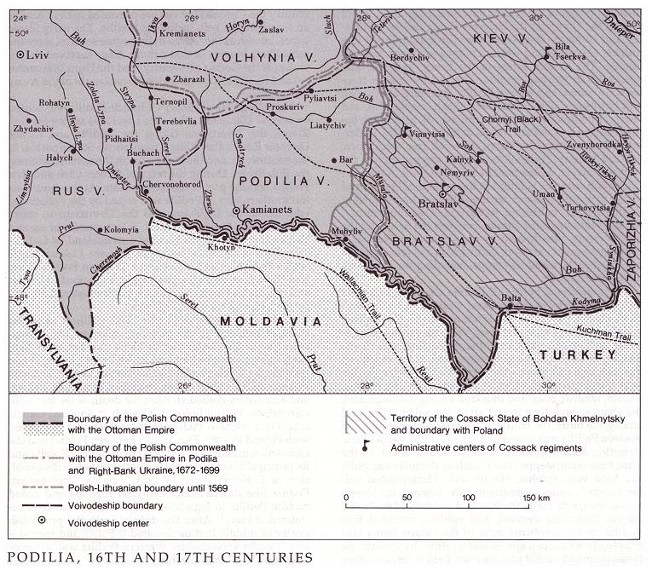Rus’ voivodeship
Rus’ voivodeship [Województwo ruskie; Руське воєводство (Ruske vojevodstvo)]. An administrative-territorial unit in Ukraine during the 15th to 18th centuries, equivalent to a palatinate. It was established in 1434 by the Polish government on the former territories of the Principality of Galicia-Volhynia, which was annexed by Poland in the late 14th century. Initially it was called the Rus’ (Ruthenia) kingdom and ruled by a vicegerent (palatine). It consisted of five territories, some of which were subdivided into counties: Lviv (Lviv and Zhydachiv counties), Sianik, Peremyshl (Peremyshl and Perevor counties), Halych (Halych, Kolomyia, and Terebovlia counties), and Kholm or Belz (Kholm and Krasnystaw counties). The territories and counties corresponded roughly to the Rus’ appanage principalities and volosti. In 1629 the total population of the Rus’ voivodeship was 943,000, and by 1770 it had risen to 1,495,000, of which the majority were Ukrainians; the urban population also included many Poles, Jews, Germans, and Armenians (for the history of the Ukrainian inhabitants of the region, see Galicia). The administrative center was Lviv. In 1677 the voivodeship had approx 3,090 villages and 160 cities and towns. It was ruled by a voivode appointed by the Polish king, and judicial and administrative authority was exercised by castellans, city and land justices, and district reeves (see viit). A dietine of representatives of the nobility was regularly convened in Sudova Vyshnia. The voivodeship's coat of arms bore a golden lion with a golden crown on an azure field, with its forepaws on a cliff; each territory also had its own coat of arms. The Rus’ voivodeship ceased to exit in 1772, when it was annexed by Austria.
Arkadii Zhukovsky
[This article originally appeared in the Encyclopedia of Ukraine, vol. 4 (1993).]
